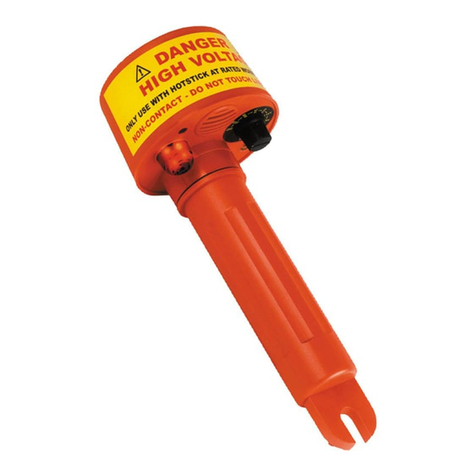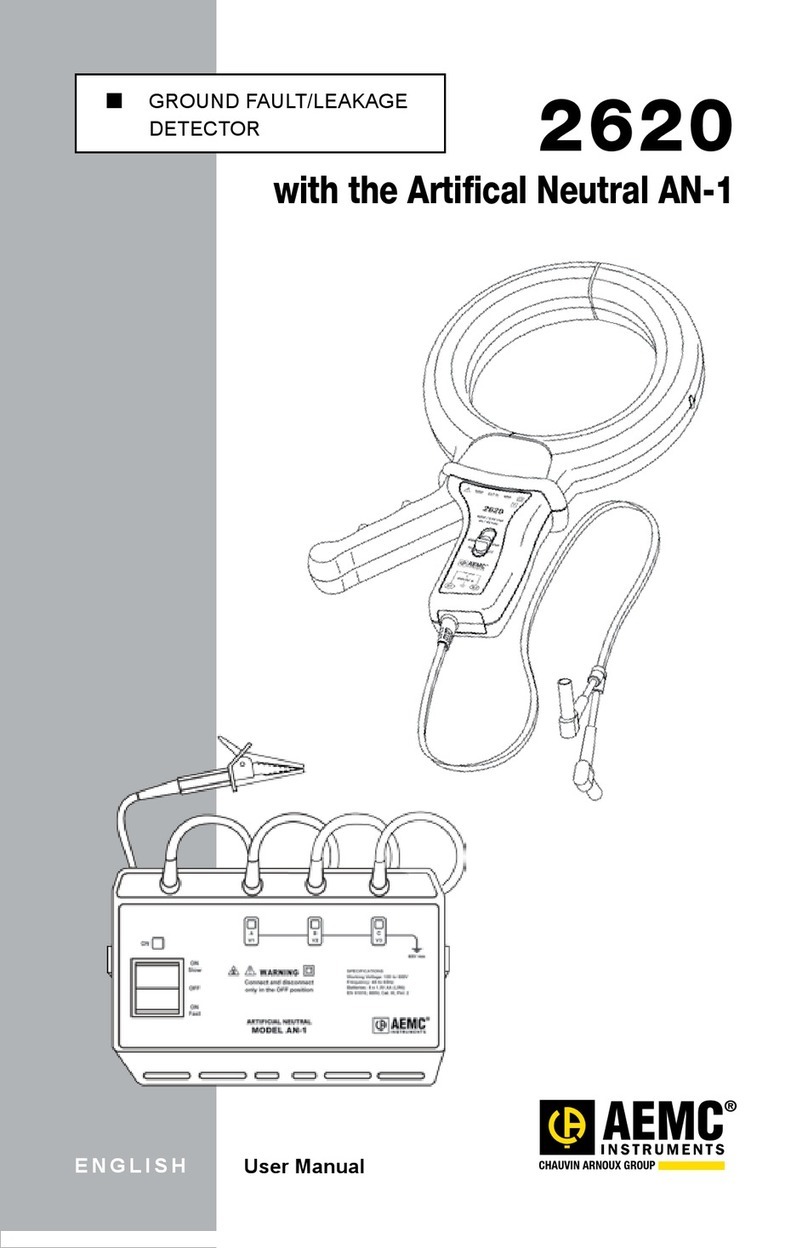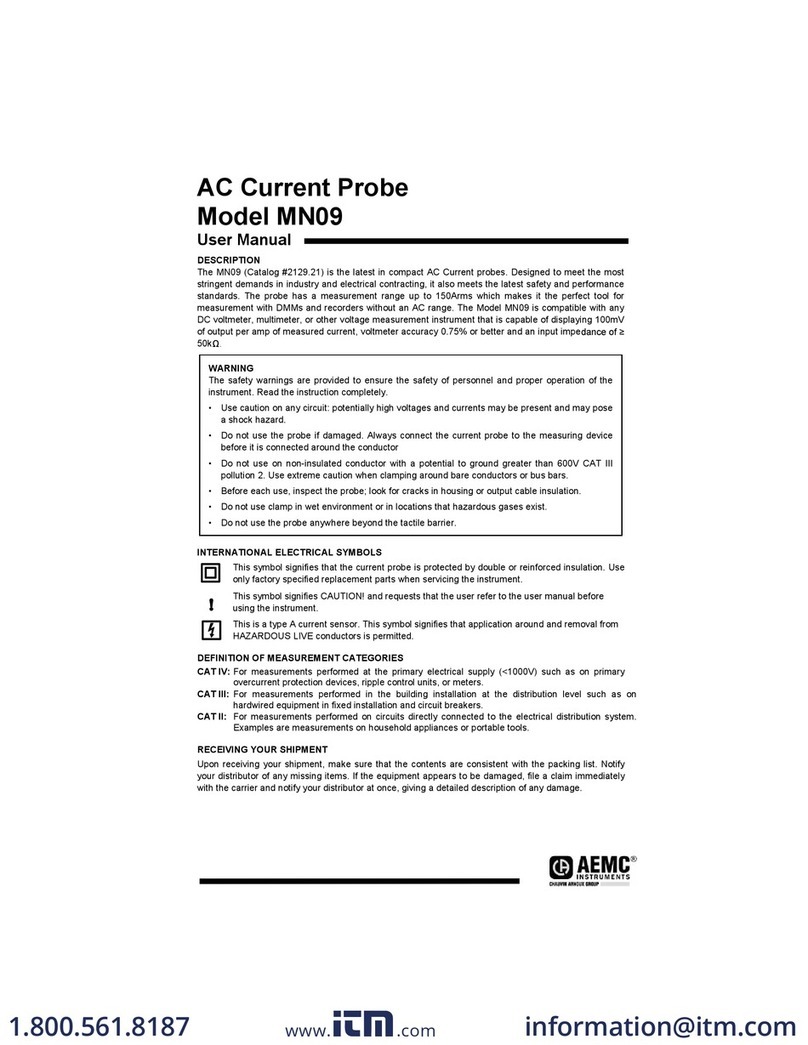
8 Non-Contact, High Voltage Detector Model 275HVD - User Manua
1. INTRODUCTION
Thank you for purchasing an AEMC®Instruments Non-Contact High Voltage
Detector Model 275HVD.
For the best results from your instrument and for your safety, you must read the
enclosed operating instructions carefully and comply with the precautions for use.
Only qualied and trained operators should use this product.
WARNING! - READ BEFORE USE!
1.1 TESTING THE 275HVD BEFORE OPERATING
The 275HVD is a battery operated instrument. It must be carefully checked each
time before use.
1. Test Before Use:
Switch the sensitivity to TEST. The warning buzzer should emit A continuous
audible tone and the warning light LEDs should stay lit up with the 275HVD in all
positions. This indicates that the sensor is operational and the battery functional.
If there is any intermittent buzzer and/or light, do not operate the 275HVD.
Further operation is not to take place until authorized and qualied
personnel have reviewed the operation and cleared the instrument
after proper Test and Functional tests.
2. Detection Test:
After a successful Test (1), perform the following steps to ensure that the
275HVD detects voltage on a known live conductor.
Select the 240 VAC range and place the sensing head near a known live
(low voltage) conductor (if not available, rub the sensor with a cloth or
against a clothing item to generate a DC static charge which will trigger
the sensor circuit detection).
The warning light and warning beeper should go ON as if a live conductor
were being tested.
NOTE: Positioning the sensing dome near a computer screen or a TV
screen (not liquid crystal display type) should also trigger the tester
while on the 240 V selection.
3. Battery:
If any malfunction or instability of the light and/or buzzer occurs, then the
user should also check the battery compartment and/or batteries.
When installing a new set of batteries or before use, tighten the battery
compartment completely and properly (insure the O-ring is well seated),
select the Test position and move the meter in dierent positions. In the
Test mode the light and buzzer should remain ON continuously and
be steady at all times. Otherwise, do not use the instrument.































